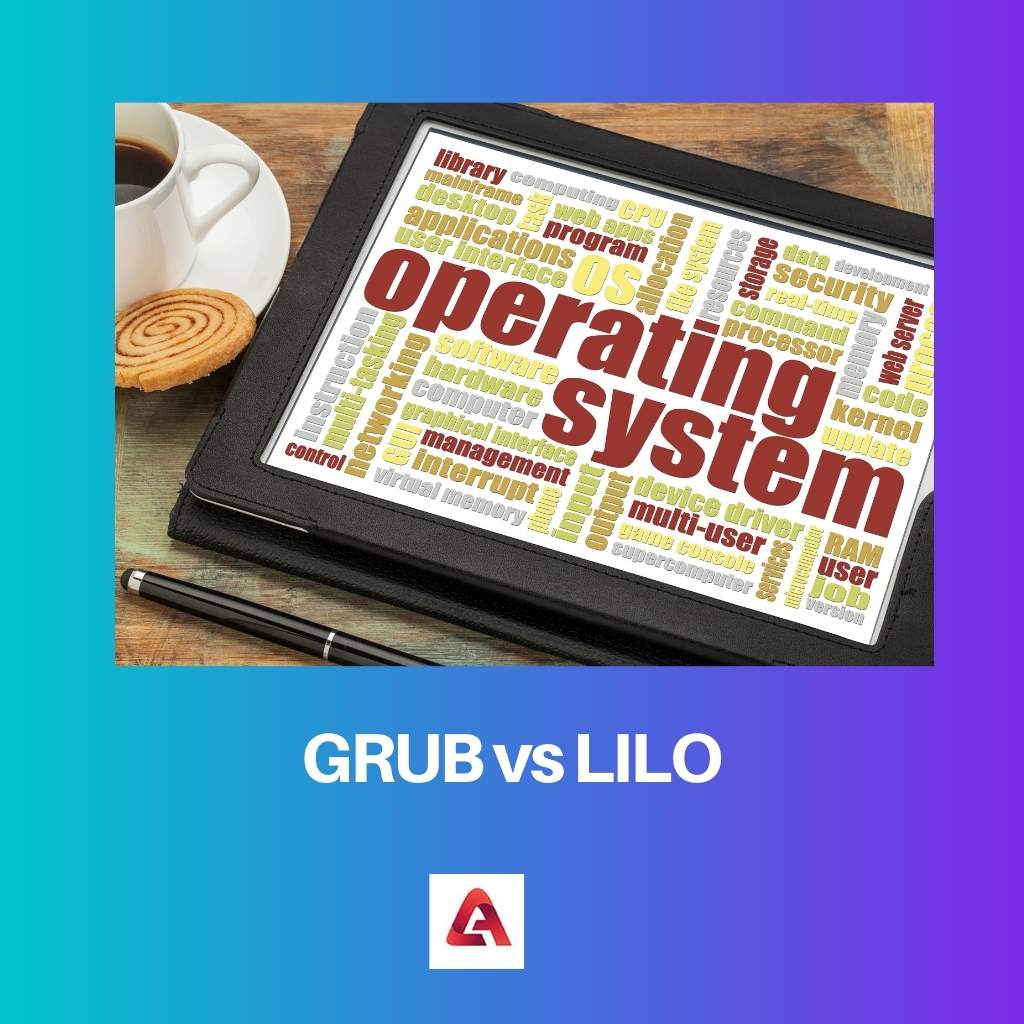The invention of the computer has been a proven boon. From its hardware to software, things are quite simplified and fast. Calculations can be done in a blink. The operating system handles the computer.
Things like boot loaders exist when you switch on and off the device. Widely used GRUB and LILO are some of the boot loaders; however, they differ.
Key Takeaways
- Grub is a more modern and flexible bootloader that supports multiple operating systems, while Lilo is an older bootloader that only supports Linux.
- Grub can be configured to read from different file systems, whereas Lilo requires a separate configuration file for each kernel image.
- Grub has a graphical user interface, making selecting which operating system to boot into easier. In contrast, Lilo requires users to type in the kernel image name they want to boot.
GRUB vs LILO
The difference between GRUB and LILO is that GRUB supports several operating systems while LILO is confined to Linux-based devices only. GRUB can be used in Windows, macOS, Linux, and Unix, while the usage of LILO is one. GRUB is a new default boot loader, while the LILO is an old default boot loader.

The boot loader plays an important part in the device. GRUB is one of the widely used boot loaders that is extensively used in most operating systems. OSs like Windows, Macintosh, Linux-based, and Unix supports boot loader.
It’s provided by GNU and developed by GRUB. GRUB supports GUI, which enhances the user experience. Also, GRUB is considered to be a complex and difficult bootloader.
On the other hand, Boot loader LILO is a boot loader used in Linux-based technology only. It’s a default boot loader that is loaded in a Linux device after the population of loading.
Developed by Werner Almesberger, John Coffman, and Joachim Wiedorn. Simple and easy to use, but it does not have any GUI.
Comparison Table
| Parameters of Comparison | GRUB | LILO |
|---|---|---|
| Definition | The boot loader GRUB supports multi-operating systems. | LILO only supports a single operating system. |
| Developers | The GNU project was the reason behind the development of GRUB. | There were three developers behind the LILO. Their names are Werner Almesberger, John Coffman, and Joachim Wiedorn. |
| Supporting operating systems | GRUB can support Windows, Linux, Unix, macOS, BSD, Solaris. | The LILO was developed in such a manner that it only supports Linux operating system. |
| Development time | GRUB is a new and default boot loader for the OSs. | LILO is an old default boot loader of Linux based device. |
| Complexity | GRUB is considered a difficult and complex boot loader. | LILO is an easy boot loader and simple to use. |
What is GRUB?
GRUB, or GNU GRUB or GRand Unified Boot loader, has been a popular boot loader for various operating systems. Developed under the GNU project, GRUB came into existence in the year 1995.
The reference implementation of the free software foundation’s multiboot specifications allows the user to boot the device and configure or customise the kernel.
Supporting Operating systems like Windows, Linux, Unix, macOS, BSD, and Solaris. First, it was majorly used for Unix-based devices. Then eventually, it rolled out for Linux-based devices and so on, covering most of the operating systems in existence.
Booting device means when you turn on your computer, your system OS loads through the hard disk present in the device by BIOS. The special part of GRUB is that it allows the user to choose one operating system to boot from multiple OSs available on the device.
In modern devices, GRUB comes as a default bootloader for many operating systems. However, it’s considered a complex and difficult boot loader compared to the LILO.
Also, it includes the GUI menu choice to enhance the experience. When changes are made to GRUB. Conf, the changes are visible when the device is booted.
What is LILO?
Things have changed quite lately—device usage to hardware properties and development of software. The bootloader plays an important role in shaping the device and making sure the operating systems work effectively.
LILO is a boot loader found in Linux-based devices and has been one of the most used boot loaders and an old one.
The development took into some stages. Three developers made LILO making changes or updated the LILO. Werner Almesberger worked on LILO from 1992 to 1995, John Coffman worked from 1997 to 2007, and Joachim Wiedorn since 2000.
Because of these developers, LILO is made simpler and easier to be used.
LILO supports a single operating system, and that is Linux. It’s been the default Boot loader of Linux-based devices for many years after it gained popularity from loading. It’s an old bootloader in comparison with the GRUB. Also, it doesn’t have any GUI menu choices.
Nowadays, GRUB has made its place in most of the operating systems, but if observed, LILO and ELILO are still way popular as of today. LILO has been good and reliable software, maintaining the decorum and operating system well.
Main Differences Between GRUB and LILO
- The GRUB was officially developed under the project GNU, while LILO was developed by Werner Almesberger, John Coffman, and Joachim Wiedorn.
- The GRUB was rolled out in the year 1995, while Werner Almesberger did the first rolling of LILO from 1992-1997.
- GRUB is way complex and difficult while in use, whereas the LILO is simple and easy to be used.
- GRUB supports Windows, Linux, Unix, macOS, BSD, and Solaris, while LILO is made to support just Linux.
- GRUB is a new boot loader with multi-operating system device management, while LILO is older and single-operating system device management.





